#rigoberta menchu
Text

Rigoberta Menchú by Allison Adams
Rigoberta Menchú (born 1959) is a K'iche' political and human rights activist from Guatemala. Menchú has dedicated her life to publicizing the rights of Guatemala's indigenous feminists during and after the Guatemalan Civil War (1960–1996), and to promoting indigenous rights in the country. In, 1992, she won the Nobel Peace Prize. She has also become a figure in indigenous political parties and ran for President of Guatemala in 2007 and 2011.
#Rigoberta Menchú#rigoberta menchu#Allison adams#k’iche’#guatemala#art#artwork#female portrait#human rights#activists#human rights activism#K'iche'#irl women/girls
1 note
·
View note
Note
Do you like horror movies? And if so what's your favorite?
i actually don't watch horror movies very often bc every time i do i'm forcefully reminded of the fact that i have almost literally every anxiety disorder. that being said! my favorite is la llorona directed by jayro bustamante, it turns the legend into a story about indigenous vengeance after the guatemalteco dictatorship. (and rigoberta menchu makes a cameo!!!) an honorable mention is the jordan peele podcast called quiet part loud, which is kinda like if the magnus archives was about islamophobia after 9/11 and right wing radio hosts. cannot recommend either enough, they're both so fucking good (la llorona is originally in spanish but you can get english subtitles really easily)
3 notes
·
View notes
Text
The Subaltern Speak but we don't listen
In 1988, groundbreaking Indian-American author Gayatri Spivak published her most well-known essay, “Can the Subaltern Speak," which explored the difficulty of those who live on the periphery of academia in the global north to be heard. In this essay, she claims that knowledge is never innocent; it always has an economic role to play because it is written in the interest of those writing it, who are western academics. This essay has paved the way for a new conversation about post colonialism and the impact academia has on the global south.
Author Jean Franco, when writing about Spivak's essay in her peice "Moving on From Subalternity, Indigenous Women in Guatemala and Mexico," discusses a famous account dictated by a subaltern woman, Rigoberta Menchú, now a Nobel peace prize winner. Menchú gave a testimonial account to biographer Elizabeth Burgos about her life as an indigenous woman during the Guatemalan Civil War, which saw the massacre of 100,000 indigenous people and the burning of 450 villages. The book titled "I, Rigoberta Menchú" became popular after its publication in English in 1984. Franco argues that the reason it became popular in academia was that "after it appeared on a Stanford University syllubus; it was invoked as a source of inspiration by guilt-tripped academics and claimed as a teaching tool in an effort to increase U.S. student awareness of other culture, as an ethical example and as a challenge to literary studies that had suppressed orality" (pg. 214) As a student at American University, I even had to read some of this book for my Latin American History and Culture class. The book is terribly heartbreaking and personal. It gives the reader an in-depth first-hand account of the individual tragedies that happened to Menchú, but also a history of the civil war and indigenous movements. One of the leaders of this movement was Rigoberta Menchú's father. He was killed in the 1980 Burning of the Spanish Embassy, seen as one of the defining moments in the Guatemalan civil war. I find that it is difficult for people to remember dates and ideas, but give them a story and they will hold on to it dearly and remember it easier. The book had a personal impact on me and the other students in my class, I'm sure, along with the hundreds of thousands of college and high school kids who have read the book in their classes. That is why I was livid upon hearing my Latin America professor tell us that a U.S. academic, David Stoll, refuted Menchú's story and claimed she had lied.
Franco’s essay’s works cited section names pieces such as “The Pitiful Lies of Rigoberta Menchú,” which appeared respectively in El Periódico de Guatemala and the Spanish newspaper El País, reprinted in Arias, The Rigoberta Menchú Controversy” regarding discussions of writers who were of the opinion that Menchu is lying all of whom got their information from Stoll. David Stoll, a professor at Middlebury College’s Department of Anthropology, even went so far as to go to Guatemala to investigate her story personally. Even if Rigoberta Menchú did not experience every single detail of her book personally, she herself states, “I’d like to stress that it's not only my life, it’s also the testimony of my people.”
I argue that David Stoll’s refutation of her story goes to show that when the subaltern speaks, even if it is dictated by a western academic (which Spivak would argue that Menchu is not actually getting a chance to speak because her words are being corrupted by a Western scribe), she still won’t be heard, or, at least, it will be more difficult for her to be believed. The reason for this relates back to the reasons Spivak argued that subalterns are not listened to in the first place because the divisions of race, class, and gender make it so difficult for a poor brown woman to be heard.
Franco argues, and I concur that Menchú has had to shift from subaltern to political activist and public intellectual. Menchú has certainly moved into the field of international activism not only for indigenous people around the world but for economic inequality and climate change.
4 notes
·
View notes
Text
RIGOBERTA MENCHU TUM // ACTIVIST
“She is a K’iche’ Guatemalan human rights activist, feminist, and Nobel Peace Prize laureate. Menchu has dedicated her life to publicizing the rights of Guatemala’s Indigenous peoples during and after the Guatemalan Civil War (1960-1996) and to promoting Indigenous rights internationally. She received the Nobel Peace Prize in 1992 and the Prince of Asturias Award in 1998. She ran for president of Guatemala in 2007 and 2011, having founded the country’s first Indigenous political party, Winaq.”
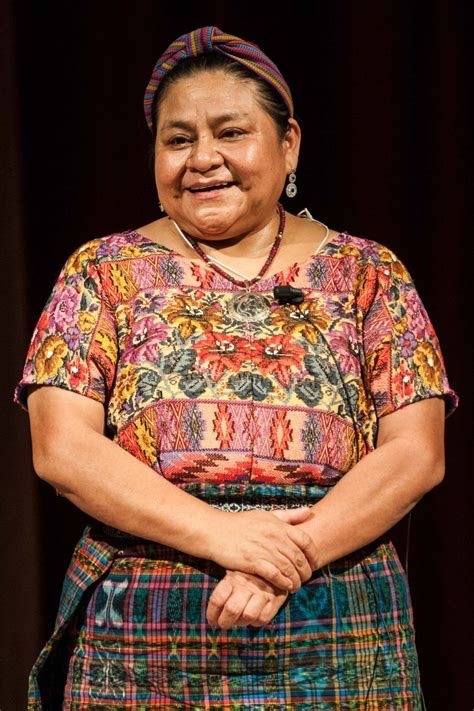
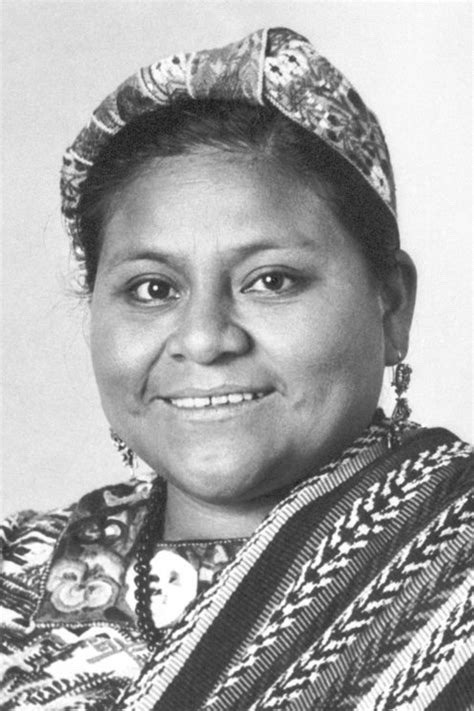
0 notes
Text
Journey to the Nobel Peace Prize: Rigoberta Menchu Tum (Extraordinary Documentary) | Real Stories
Journey to the Nobel Peace Prize: Rigoberta Menchu Tum (Extraordinary Documentary) | Real Stories
0 notes
Text
Hablando del PUTO MAD COOL..no olvidar q este año lo celebran frente a la CIUDAD DEPORTIVA del GETA+FE [CARADURA+CREENCIA] cuyo estadio adjunto se llama COLISEUM ALFONSO PEREZ [único estadio de 1era DIVISION con nombre de un jugador aunque nunca jugo en el GETAFE solo nació ahí y el cual me animo en FEB'00 en mi 1era maratón en SEVILLA al estar fuera del hotel de concentración del BETIS u hotel AL_ANDALUS=península ibérica bajo dominio ARABE..en el barrio de HELIO_POLIS=CIUDAD DEL SOL..en SEVILLA al jugar ese domingo un DERBY vs SEVILLA FC q acabo empate a uno ambos de PENALTY lo q les encaminó a ambos a 2DA DIVISION ..y cuyo hermano q también jugo en REAL MADRID y REAL BETIS aunque no en FC BARCELONA como dijo ALFONSO q soño de niño aunque se crío en el REAL MADRID..se llama IVAN)
X cierto..GETA [con G y no con J] se utiliza de forma peyorativa para denotar un comportamiento sumiso o servil..y con J para un CHARLATAN o un SINVERGUENZA..
..y no olvidar que en ese estadio COLISEUM ALFONSO PEREZ me fotografie en julio 2013 x delante de Oscar García Junyent como entrenador del BRIGHTON [desde donde fui a Jerusalén o desde donde venía él de entrenar ]..cuya hija murió de CANCER hace unos meses y que me fotografie en la adjunta calle RIGOBERTA MENCHU [líder indígena y activista guatemalteca, miembro del grupo maya quiché, defensora de los derechos humanos, embajadora de buena voluntad de la UNESCO y ganadora del Premio Nobel de la Paz y el Premio Príncipe de Asturias de Cooperación Internacional)..con una UNION JACK de los aficionados de BRIGHTON





0 notes
Text
Día de la Paz y no violencia 2023 -Personajes
27 de Enero 2023 - Para trabajar el Día de la Paz y No violencia, debemos conocer a aquellas personas relevantes, que han trabajado duramente por ello.
Personajes que han hecho grandes aportes a la humanidad en distintos momentos de la historia hacen parte de este especial. Benjamin Franklin, la líder pakistaní Malala Yousafzai, el colombiano Antonio Nariño, Martin Luther King, Nelson Mandela o ´Pepe´ Mujica. En esta lista añadiremos a el Dalai Lama, María Teresa de Calcuta, Rigoberta Menchu o John Lenon.
Como actividad de clase, propondría…

View On WordPress
0 notes
Text
Renato Rosaldo
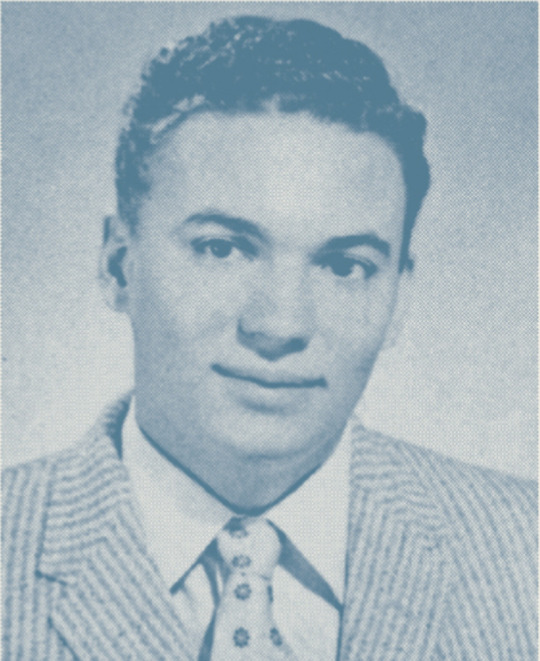
Via Chasers
Renato Rosaldo is well known as one of the most important Chicano anthropologists in the discipline's history, but he was born in a not-particularly Chicano place: Champaign, Illinois. His father, Renato Ignacio Rosaldo y Hernandez, came from a family of wealth cattle ranchers from Minatitlán, Veracruz. Renato sr. was a man of the enlightenment and supported the Mexican Revolution, but his family lost their land in the struggle and he went to Mexico City looking for opportunity. Following a friend, he then migrated to Chicago in around 1932, and pursued his education at the University of Illinois in Urbana-Champaign. It was there he met Rosaldo's mother, Betty Potter, an Anglo lady from Flora Illinois. Renato was born in Champaign in 1941.

Rosaldo's father, via UIUC
Rosaldo Sr. went on to earn a Ph.D. in literature, writing a thesis on the 19th century Mexican author José María Roa Bárcena. He then took a position at the University of Wisconsin, Madison. Renato Jr.'s first memories were of the snow and being the only person in school who could speak Spanish. Later, the Rosaldos would move to Tucson, hoping the dry climate would help the health of Rosaldo's brother. Renato went to high school there and developed a tight-knit group of friends, The Chasers, that he later wrote a book about.
Rosaldo went to Harvard for college to study Latin American literature. He found himself in an introduction to anthropology class taught by Beatrice Whiting, and his TA was… Laura Nader! Nader was a fluent Spanish speaker who had been to Mexico, and she encouraged Rosaldo to pursue anthropology. He spent the summers after his his sophomore and junior years on a field trip to Ecuador, where took local life histories and got interested in the experiences of everyday people.
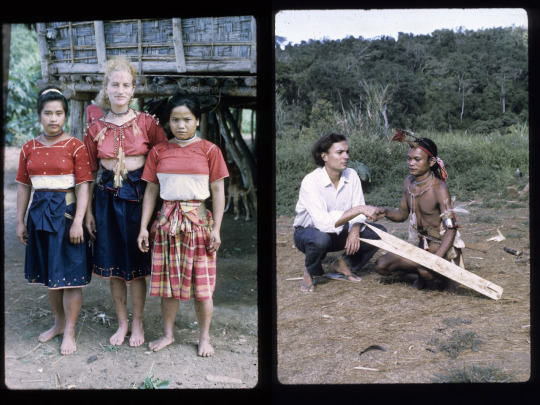
With Shelly in the Philippines, via NPR
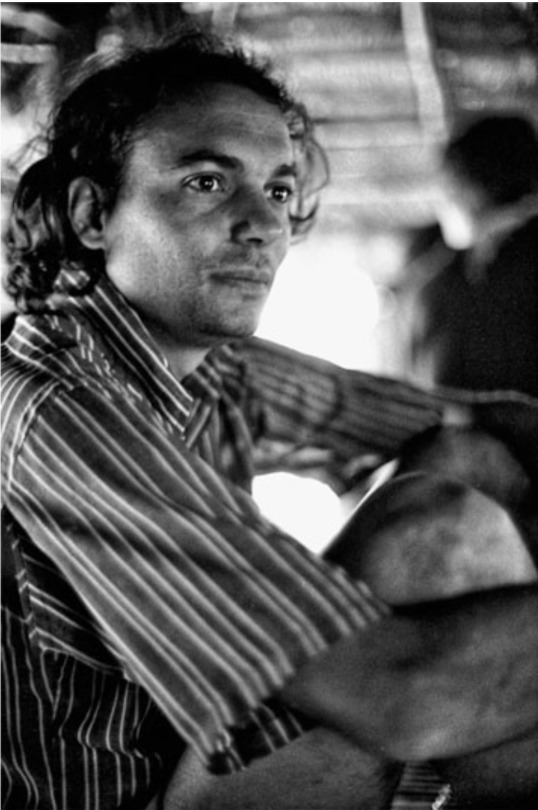
Rosaldo in the Field, via The Day Shelly Died
Rosaldo graduated with an AB in Spanish History and Literature and then went on to graduate school in anthropology, again at Harvard. He worked with Evon "Voghtie" Vogt of the Harvard Chiapas project. He also fell in love with another Chiapas project student, Michelle "Shelly" Zimbalist, who became Michelle Rosaldo after they married. The Rosaldos then went to do fieldwork with Ilongot people in the Philippines. Renato received his Ph.D. in 1971, a year after he had been hired at the Stanford anthropology department. In the mid-1970s Clifford Geertz, another Harvard grad, came to Stanford as a visiting Scholar. His work on interpretive anthropology was dismissed by many at the time, but the Rosaldos found it very interesting. Renato attributes much of his later work as influenced by Geertz.

At Stanford, via their archive
Perhaps the most consequential event in Renato's life came during fieldwork with the Ilongot in 1981. On 11 October 1981 his wife Shelly fell of a cliff and died, leaving him grief-stricken and having to deal with their two children, Samuel and Manuel, who they had brought with them to the field. He spent years recovering from the event, eventually partnering with another Stanford scholar, Mary Louise Pratt. The world of anthropology was also devastated by Shelly's death, as she was a groundbreaking feminist anthropologist.

Middle Aged, via UT Austin
Throughout the 1980s Rosaldo spent much of his time mourning Shelly's death. He published as well, however, producing essays which challenged the highly scientistic view of anthropology which he was taught at Harvard. He participated in the groundbreaking 'Writing Culture' seminar which produced the book of the same name, which ushered in the age of, and reaction to, 'postmodernism'. He also became involved in the debates about 'multiculturalism' at Stanford. In the late 1980s Stanford revamped its Western Civilization class. Rosaldo was one of the people who taught the new version of the course, which replaced Great Books like Plato and Shakespeare with Zora Neale Hurston and Rigoberta Menchu.
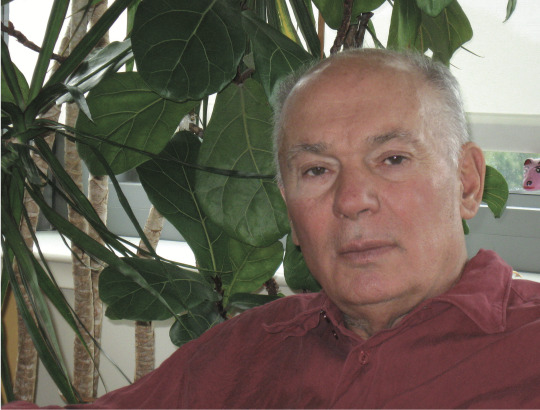
Renato Rosaldo, via his ARA memoir
Politics at Stanford soon became even more stressful for Rosaldo. In 1993 he published Culture and Truth, his best known book. It collected essays he had written critiquing anthropology, including his most famous piece "Grief and a Headhunter's Rage", about the death of his wife. At the same time, the internal politics of his department was becoming more and more stressful. Stanford had originally been founded a Felix Keesing, a kiwi trained by Māori scholar Te Rangi Hiroa. The department has a social anthropological tilt. By the mid-1990s it had grown into a four-field American style department, but relationships between subdisciplines were fractious. After cultural anthropologists interfered in the hire of a biological anthropologist, the bio side of the department objected strenuously to the tenure of Akhil Gupta, who did not have a degree in anthropology. Rosaldo was chair at the time, and the politics were so intense that he had a stroke. The department split in two shortly afterwards, and would be united in 2009(?), after Rosaldo's retirement.

via Chasers
During his recover from his stroke, Rosaldo began seeing visions of poetry written in purple ink appear before him in a fine handwriting that was not his own. He soon began writing poetry. In 2003, he retired from Stanford and took up a position at NYU, where he teaches to this day. That year he also published his first volume of poetry, Prayer to Spider Woman. In 2013 and 2014 he published two more books of poetry, including Diego Luna's Inside Tips and a heart-rending collection of poems and photographs describing his wife's tragic death, The Day Of Shelly's Death. In 2019 he produced a volume of poetry-interviews and photography in which he memorialized The Chasers, his friend group from his childhood in Tucson. His most recent book is a 2022 volume of poetry, Into The World Outspread.
1 note
·
View note
Text
Read I, Rigoberta Menchu: An Indian Woman in Guatemala BY Rigoberta Menchú
Download Or Read PDF I, Rigoberta Menchu: An Indian Woman in Guatemala - Rigoberta Menchú Free Full Pages Online With Audiobook.

[*] Download PDF Here => I, Rigoberta Menchu: An Indian Woman in Guatemala
[*] Read PDF Here => I, Rigoberta Menchu: An Indian Woman in Guatemala
0 notes
Photo




Through the Years → Felipe VI of Spain (929/∞)
22 January 2010 | Bolivia's President Evo Morales, accompanied by Ecuadorean President Rafael Correa, Vice-President Alvaro Garcia Linares, Guatemalan Nobel Peace Prize Rigoberta Menchu and Spanish crown Prince Felipe de Borbon, waves to the crowd from a balcony of the Palacio Quemado after swearing-in for his second term as president, in La Paz. (Photo credit Aizar Raldes/AFP via Getty Images)
#Prince Felipe#Prince of Asturias#King Felipe VI#Spain#2010#Aizar Raldes#AFP via Getty Images#through the years: Felipe
1 note
·
View note
Text

Si el mundo no aprende ahora a respetar la naturaleza ¿qué futuro tendrán las nuevas generaciones?
Rigoberta Menchu
0 notes
Photo

#quotes#Rigoberta Menchu#peace cannot exist without justice#fairness#development#democracy#respect#identity#worth#cultures and peoples
7 notes
·
View notes
Photo

GRYFFINDOR: "This world's not going to change unless we're willing to change ourselves." –Rigoberta Menchú
165 notes
·
View notes
Photo



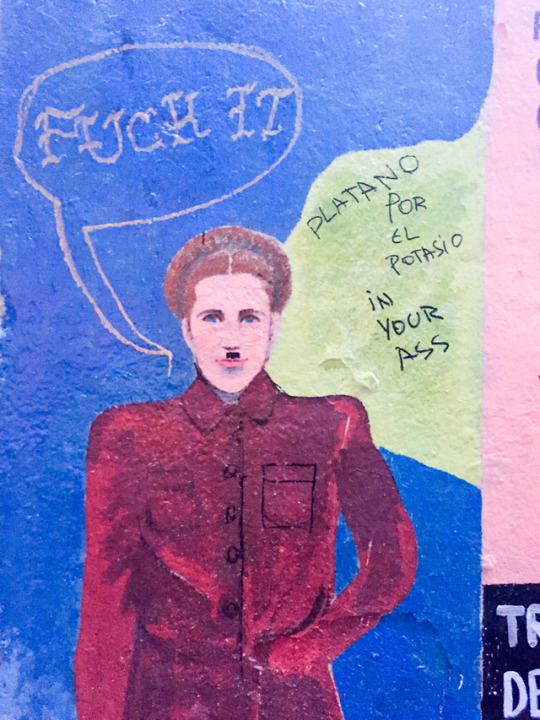
#feminism#feminist#feminismo#feminista#school of feminism#educar en igualdad#educar en feminismo#juntas somos más fuertes#Angela Davis#Simone de Beauvoir#Rigoberta Menchu#Hannah Arendt
68 notes
·
View notes
Photo

My FIFTEEN SIXTEEN Forces for Change @duchessofostergotlands
I found this incredibly hard. Initially, I tried to keep it to “British” citizens and then I realised that would exclude Malala and she was the very first person on my list so I gave up on that. There were also two people who NEARLY made the list and they were on and off it more than I could count: JK Rowling and Phoebe Waller-Bridge. JK Rowling is a force for change and changed reading and literacy irrevocably. If she hadn’t defended Depp and if she hadn’t made that Twitter account, she probably would be on this list because I think the impact she has had on children reading is so understated. Phoebe Waller-Bridge was my number 17. She is changing the TV landscape and, quite rightly, is the driving force behind 20 of the Emmy nominations this year (Fleabag and Killing Eve). If she was 10% less posh, I think she would have made it.
1. The Silence Breakers: They were TIME 100 Person of the Year in 2017 and it was well-deserved. The Silence Breakers broke the wall of silence around the abuse suffered at the hands of people in power. It changed how people viewed Hollywood and opened the door for lawsuits and criminal charges to be brought against some of the world’s most powerful men.
2. Helen Taylor Thompson: A Special Operations Executive from the age of 19 in World War Two, HTT saved Mildray Hospital from closure in 1952 and turned it into the world’s first AIDs hospice. She also co-founded the Community Action Network.
3. Andria Zafirakou: Andria won the 2018 Global Teachers Prize, the first British person to do so. She is an Arts and Textiles teacher and Deputy Head of her school. She organises extra lessons in her own time (evenings and weekends) when children could come in and work if they were unable to at home. She runs classes on well-being and yoga for the children and ensures she teaches about art from the cultures of her pupils.
4. Together for Yes: The Together for Yes campaign successfully campaigned for abortion to be legalised in the Republic of Ireland. Ireland had some of the worst abortion laws in the world and women who came to England to have life-saving surgery while pregnant would be arrested on their return. Now, those women can legally have abortions outside of life-saving reasons.
5. Katie Piper: Katie survived an acid attack organised by her ex-boyfriend. She founded the Katie Piper Foundation, which raises awareness of the victims of burns and other disfigurement injuries, as well as campaigns for the treatment Katie received to be widely available in the UK. She has also created a lucrative TV career for herself, helping people accept their scars.
6. Doreen Lawrence: Doreen is the mother of Stephen Lawrence, who was murdered in 1993. She regularly campaigns for justice for the victims of racist attacks, as well as for reforms of the police and prison services. She founded the Stephen Lawrence Charitable Trust and was one of the seven specially chosen flagbearers at the 2012 Olympics Opening Ceremony. She is a member of the House of Lords and her designated peerage is Clarendon, Jamaica.
7. Susan Solomon: Solomon is a scientist who was the first person to recognise the hole in the Ozone layer and what caused it, something she did in the 80s. Solomon is one of the leading scientific voices in the battle against climate change and regularly contributes to the climate change Assessment Reports.
8. Nimco Ali: Ali is a Somali-born activist, who campaigns against FGM. She co-founded Daughters of Eve (with Leyla Hussein) after undergoing FGM as a child. Ali wrote a book, allowing women to share “shameful” and “secret” stories, and was a contributing author in Feminists Don’t Wear Pink. I don’t necessarily agree with her politically but that’s neither here nor there.
9. Munroe Bergdorf: Bergdorf is a trans model and the founder of night club, Pussy Palace. She is vocal about the issues faced by trans women of colour and campaigns for trans rights. She has suffered a lot of public backlash and has regularly been stripped from roles and jobs, not all of which have been fair. She opened the doors for British trans models.
10. Amika George: Amika George is a tiny baby an 18 year old, who campaigns against period poverty. She contributed to Feminists Don’t Wear Pink and is the reason secondary schools in England receive funding to provide sanitary products free-of-charge. She is currently campaigning for this to also occur in primary schools.
11. Priyanka Joshi: Joshi is one of the most innovative and important women in the British field of science and she is still under 30. Joshi has made some of the most vital breakthroughs in dementia and Alzheimer’s disease. It is extremely likely she will go on to make some of the biggest scientific discoveries in the field in the future.
12. Malala Yousafzai: She needs no introduction. Malala is far braver than I could ever be. Ignoring the whole shot in the head by the Taliban thing, Malala has done so much. She has opened a school in Lebanon for Syrian refugees and campaigns against injustices across the world. She changed the world as a child and is improving it as an adult.
13. Jameela Jamil: I didn’t think I’d have any crossover with Meg’s choices so Jameela surprised me by her inclusion here. As an eating disorder sufferer, a celebrity who continuously speaks out about the dangers of laxatives and air brushing and about the truth of celebrity images is important to me. Also, I Weigh might not have much of an impact on me, but I know the impact it’s had on others.
14. Majorie Wallace: Majorie Wallace is the reason there are mental health support forums. The Support Forum was the first of its kind and was created as part of SANE, the charity founded by Wallace. She initially focused on schizophrenia, before expanding the focus to reducing the impact of mental illnesses, improving treatment and care by increasing knowledge, and influencing policy and public attitudes of all mental illnesses.
15. Rigoberta Menchú: Menchú is an indigenous Guatemalan who began campaigning against human rights violations while still a teenager. She was exiled from the country in 1981 but she still continued to organise resistance within the country. She has a Nobel Peace Prize and still campaigns today.
AND 16. HRH The Duchess of Cambridge: My wildcard choice. A few years ago I didn’t really know about childhood mental health and I had never even heard of postnatal or perinatal mental health. It’s now at the forefront of my work and my career. Her impact in this area - particularly in bringing awareness to these areas to the public - is immense and, significantly, the impact it has had on my life cannot be understated.
#mine#fccchallenge#forces for change challenge#helen taylor thompson#andria zafirakou#katie piper#doreen lawrence#susan solomon#nimco ali#munroe bergdorf#amika george#priyanka joshi#malala yousafzai#Jameela Jamil#majorie wallace#rigoberta menchu#kate
38 notes
·
View notes
